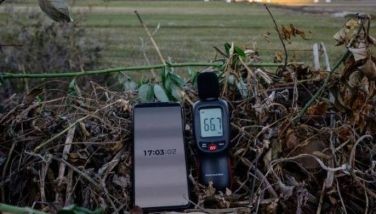Alaskans offer tips on surviving below-zero temps
ANCHORAGE, Alaska — Alaskans know a thing or two about handling day-to-day activities in freezing temperatures, where below-zero rarely means staying inside. While people in the Lower 48 are shivering in Alaska-like temperatures this week, residents of the coldest state offer these five tips:
1. LESS IS MORE, IF LAYERED
Piling on more clothes is not the best way to stay warm, said Staff Sgt. Zachary McGee, a Kentucky native who is a senior instructor at the U.S. Army's Northern Warfare Training Center in Fairbanks. More clothes cause a person to sweat, and once you stop moving the moisture freezes. Instead, the secret is to dress in layers.
And for your hands? "Mittens over gloves any day," McGee said, noting gloves separate fingers while mittens keep them together and warm.
2. THE RIGHT MATERIAL.
Cotton kills, or so goes the old Army cold weather instructors' saying. Cotton clothing soaks up sweat and moisture from snow and takes a long time to dry.
"It's like trying to keep your body warm wearing an icicle," McGee said.
Tim Doran, principal of Denali Elementary School in Fairbanks, runs outside all winter. He forgoes cotton underwear for "wind briefs," which include a synthetic panel. After that, he dresses in layers and then tops it off with fleece to trap body heat. He has no qualms about running 90 minutes at minus 40 to minus 50.
3. DON'T MAKE CONTACT.
At 15 below, touching metal of any kind, even a gasoline pump, with bare hand can cause damage. It's called contact frostbite. Shaun Kraska, principal of West Valley High School in Fairbanks, counsels her students to forget fashion and wear hats or hoods when winter arrives. Yes, a hat or hood will muss hair, but an uncovered ear is susceptible to frostbite, especially if it's adorned with a metal earring. At extreme temperatures, don't forget to cover noses and cheeks, too.
4. HAVE A SLEEPING BAG HANDY
Standard backseat equipment for anyone on an interior Alaska winter road trip is a sleeping bag in the back seat.
Athletes on school-sponsored trips across town or on a 400-mile trip to Anchorage are required to pack a cold-weather emergency bag containing boots, a warm coat and gloves or mittens.
People on their way to work might wear dress shoes, but many carry a pair of boots in case their car breaks down and they have to walk or wait for help. At minus 15, you're not going to do well even walking a half mile in dress shoes worn over cotton socks or panty hose, said Lt. Col. William Prayner, head of the Northern Warfare Training Center.
5. RESPECT THE COLD.
"You can't be afraid of the cold but you have to respect it," Prayner said.
The Army tells soldiers to know their bodies and watch for symptoms in others, such as a white blotch on cheeks. If your toes or fingers become tingly, change your conditions or your clothing.
An amazing number of Fairbanks residents run or bike all winter. Parents new to the area often ask how elementary school children can enjoy the playground at 20 below zero.
The school keeps a supply of hats, mittens and snow pants around for children who forget or lose clothing but they don't stay inside.
"If you do that, the kids will never go outside in the winter," Doran said. "They'll go crazy and you'll go crazy."
- Latest
- Trending


































